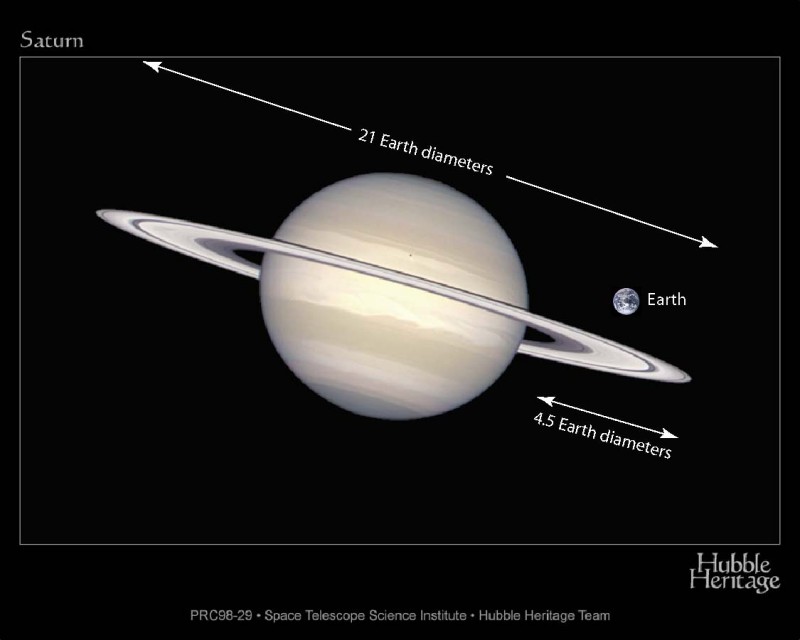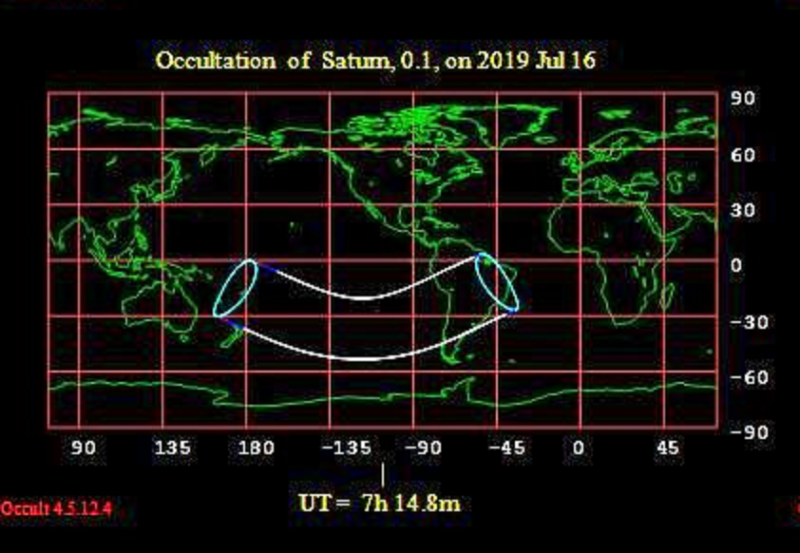On July 15, 2019, the almost-full waxing gibbous moon and the planet Saturn pair up together on the sky’s dome, staying out nearly all night long. Saturn just passed its yearly opposition on July 9. It’s now at its brightest and best for all of 2019. Although the July 15 moon will probably appear full to the eye, it isn’t truly full until the night of July 16. What’s more, on July 16, the northern side of the full moon will swing through the southern part of the Earth’s dark shadow, to showcase a partial lunar eclipse that’ll be visible from South America, Europe, Africa, Asia, Indonesia, and Australia – but not in North America.
Saturn will be near the moon on July 16 as well … and depending on where you live worldwide, the moon and Saturn will couple up most closely on July 15 or 16. So find Saturn on either night! And – if you’re in a place to view the eclipse – enjoy it on eclipse night.
Read more: Partial lunar eclipse on July 16-17
These two luminaries – the moon and Saturn – shine in the eastern part of the sky at dusk, as viewed from around the world. They climb highest up for the night around midnight and set in the west as darkness gives way to dawn. Saturn shines as brilliantly as a 1st-magnitude star, that is, as one of the brightest stars in our sky. Still, you might easily overlook Saturn in the moon’s glare. If you can’t see a bright point of light near the moon on July 15, try blocking out the moon with your finger.
Saturn, the sixth planet outward from the sun, is the farthest world we can easily see with the unaided eye. The moon and Saturn aren’t close together in space tonight but closely align on the same line of sight. Tonight’s moon is about a quarter million miles (400,000 km) distant, whereas far-off Saturn is nearly 3,500 times the moon’s distance from Earth.
Want to know more? Find the moon’s present distance from Earth, and Saturn’s present distance (in astronomical units) from Earth. One astronomical unit = sun-Earth distance.

The moon will sweep 0.2 degree south of Saturn on July 16, 2019, at 7:27 Universal Time. (For reference, 0.2 degree is 40 percent of the moon’s angular diameter.) At Canadian and U.S. times zones, the moon passes south of Saturn on July 16 at 4:27 a.m. ADT, 3:27 a.m. EDT, 2:27 a.m. CDT, 1:27 a.m. MDT, 12:27 a.m. PDT – and on July 15, at 11:27 p.m. AKDT (Alaska) and 9:27 p.m. HST (Hawaii).
One thing to remember: when an almanac tells you that the moon swings so many degrees to the north or south of a planet or bright star, it means as seen from the center of the Earth. From the Earth’s surface, the moon passes farther away from Saturn at more northerly latitudes, yet closer to Saturn at more southerly latitudes.
In fact, if you’re far south on the Earth’s globe, like in Antarctica or the southern tip of South America, you would actually see the moon pass to the north of Saturn – instead of to the south of Saturn. For much of South America, however, the moon won’t pass to the south or to the north of Saturn. Look at the worldwide map below. The area in between the solid white lines will actually have the moon occult – pass directly in front of – Saturn for a portion of the night on July 15-16, 2019. In South America, this occultation will happen in the morning hours of July 16.

Bottom line: As darkness falls on July 15, 2019, try finding the planet Saturn in the glare of the almost-full moon. Then watch for Saturn again the next night, especially if you’re in a part of the world that can view the July 16-17 partial lunar eclipse. North America, tough luck for us. We won’t see the eclipse.











